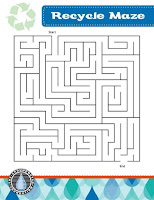Contamination Crossword - How many contamination vocabulary terms do you know?
Find all the groundwater words in this fun word search! Groundwater Word Search
Recycle Maze - Can you find your way out of this twisty maze?
Water Crossword - Review what you know about our most important resource - Water!
Show off your water cycle knowledge and complete the Water Cycle Crossword.
Wet Word Search - How many vocabulary words can you find?
Frannie the Fish Coloring Sheet - Reveal your inner artist!
Keep an eye out for a new tool from The Groundwater Foundation - a searchable filter for groundwater education activities - you'll be able to search by age group, topic, time, and category for even more fun activities and resources. The filter will be online soon!





















